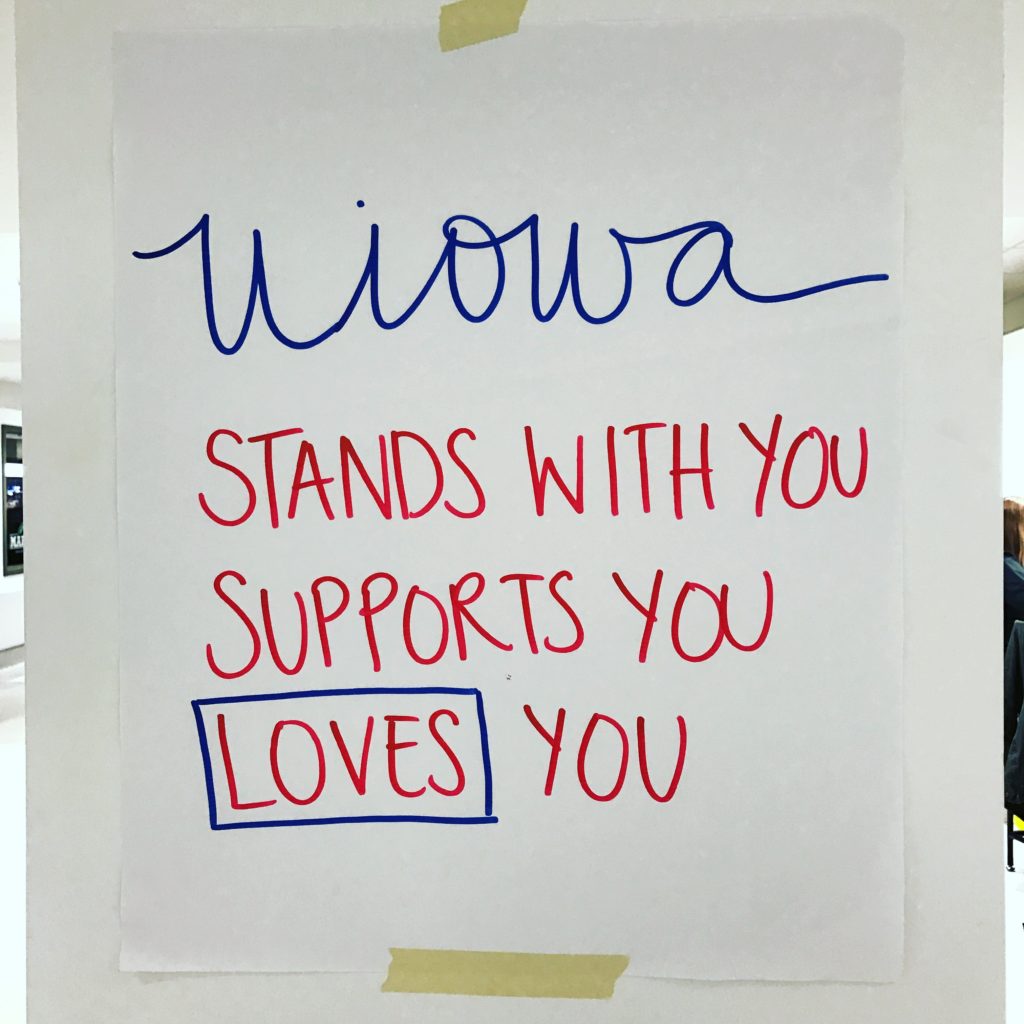There are numerous reports of children, youth, and college students being depressed, fearful, and anxious about the outcome of the 2016 election. This article is offered to explain this phenomenon to those who perceive it to be a matter of young people being spoiled and unable to accept not getting thir way.
Having picking up on the fears of their parents, and having overheard fairly intense political discussions, some children were crying at the outcome of the election. This is understandable. It was as if the adults in their life, and their parents, and those in the news, had repeatedly told them a bedtime story about an orange monster named Donald Trump, and now the monster would be ruling the kingdom. Yes, there actually is a bedtime story about this – Click here to view the video.
College students are reported to need help coping with the election results. At some institutions, exams are being canceled while students recover and therapy is being offered. At the University of Iowa, handwritten signage like the one shown below conveyed support and condolences to those students who were traumatized by the election results.

Areas of Fear
Those who are feeling fear need support and understanding. This article is not intended to dismiss people’s fears, or suggest they are unfounded or invalid. It’s not written to those who are feeling afraid. It’s written to anyone else who doesn’t understand the phenomenon.
Some conservative Republicans are claiming that excessive coddling of college students is just an example of how young adults are so pampered and fragile that they can’t cope with not getting their way. Yet, this may be an oversimplification of why young people are reacting as they are.
There are several areas of fear that people have. In addition to worries about Trump fulfilling his campaign promises, there are concerns about an uprising of hateful racist bigots who will taunt and harm those they don’t like who are not white, or those who are gay. There’s also the trauma of having a leader who is someone perceived and portrayed as a horrible human being.
There are already hate crimes and acts of intimidation being carried out against gays, Jews, and people of color, with references to Trump — which demonstrates that the Trump movement, at least a segment of it, has been emboldened to act out their hatred toward their fellow human beings.
Media Silos Feed Fears
Perhaps the real cause behind the fear, trauma, and depression is that over the past year millions of Americans “were all living in an echo chamber on social media where they were not being exposed to differing opinions or news.” (source)
“… journalists who spend all day chatting with one another on Twitter and congregating in exclusive social circles in national capitals — constantly re-affirming their own wisdom in an endless feedback loop — were certain of victory.” (source)
The hype and political rhetoric became increasingly inflammatory, exaggerated, extremist, and polarizing. Those who were immersed in a myopic cult-like sectarian neoliberal cocoon of paste-and-copy journalism became convinced that Trump was the worst human being to ever walk on the earth and that he might not even be human. Now he’s going to be president.
Case Study of Misinformation
The world will never forget the day that Donald Trump referred to Mexicans as drug dealers, criminals and rapists. It’s an event still referred to by major news media outlets. As a result of Trump’s statements, numerous companies cut ties with him including Macy’s, NBC Universal, Serta, and more. It was a disastrous public relations incidents, and some thought it would cause him to lose the election.
There’s only one problem. It never happened. At least not in the way it was reported to have happened. Try to tell anyone the truth about what Trump really said and they won’t listen to you. They are so convinced that what the mainstream media reported is true, they can’t accept anything else.
Trump wasn’t saying all Mexicans are “drug dealers, criminals and rapists.” Nor was he saying that Mexican immigrants are horrible people. He wasn’t even referring to the smaller group of illegal immigrants. He was saying that among the very small subset of people who come into the country illegally, although some are good people, some have ‘have lots of problems’ and he described those problems as drugs, crime, and rape. So, Trump was talking about a very small percentage of Mexicans. In fact, Trump’s official statement about Mexico is “I love the Mexican people. I love Mexico.” (source)
Even so, his statements were repeatedly misrepresented to convey that he believes all Mexicans are “drug dealers, criminals and rapists.” (source)
On 6 June 2016, Amnesty International published an article on the epidemic of institutionalized rape culture in Mexico that is prevalent and among law enforcement. As an organization, Amnesty International wasn’t saying ‘all Mexican’s are rapists’ but simply reporting on a fact that numerous cases have been documented where women are raped while being detained. As with Donald Trump’s observation, the focus was on a small group. Nobody said a word about Amnesty’s report being potentially offensive.
There are numerous examples of news stories and narratives about Trump that were exaggerated, misrepresented, or entirely false. These are the stories that drove numerous conversations online.
If you were among the millions of people who were immersed in the fear-based myopic cult-like sectarian neoliberal propaganda echo-chamber cocoon of copy-and-paste journalism, you too would be very fearful, anxious, and depressed right now. People really do need support and understanding of friends and family right now as we wait to see what a Trump administration actually brings us.
This article is not to suggest we have nothing to be worried about. It’s just that many of our fears are misdirected and misinformed. Here’s a list of concerns about Donald Trump as President that are based on facts. Depending on your political views, you may or may not find these things troubling.